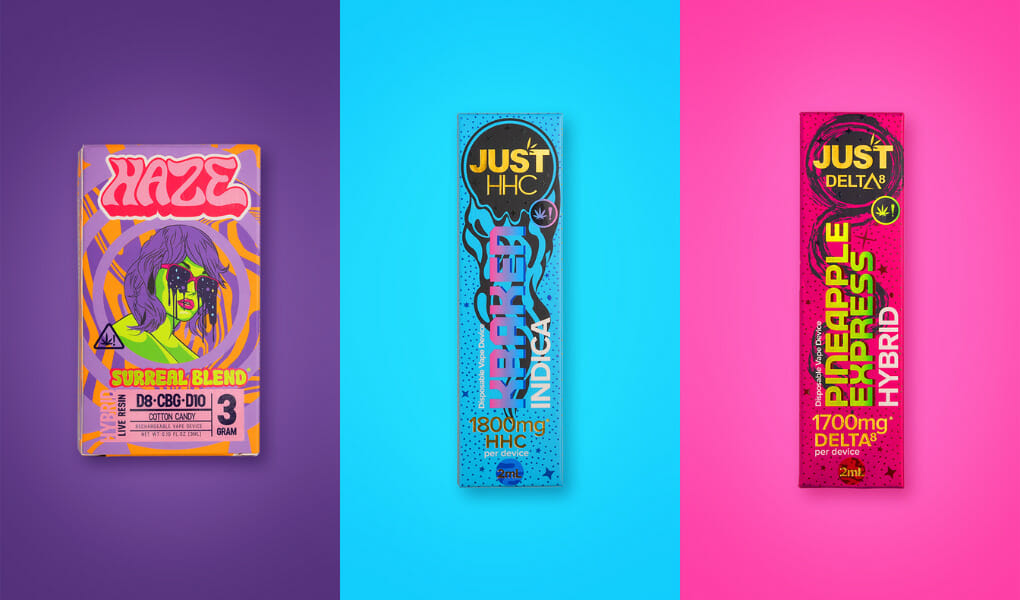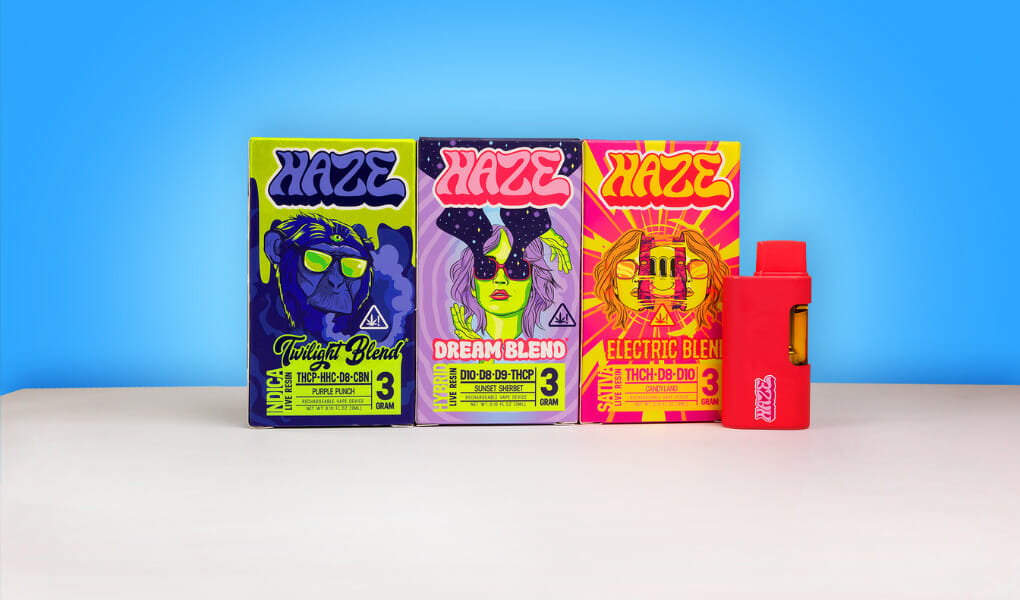HHC vs. Delta-9 and Delta-8 THC: Understanding the Differences

The cannabis industry is interesting and complicated currently, with products like HHC, Delta-8 THC, and Delta-9 THC. Understanding the compositions, differences, and similarities is essential for searching this market. An interesting journey to understand the small differences between HHC, Delta-8 THC, and Delta-9 THC is taken by this blog article. We want to highlight various aspects of these cannabis products by examining factors like potency, legal status, chemical structures, side effects, and consequences of drug testing.
Potency Comparison: Unveiling the Strengths
Potency, the measure of a substance’s strength or effectiveness, stands at the forefront of differentiating these cannabinoids. Delta-9 THC emerges as the uncontested leader in this realm. Renowned for its profound psychoactive effects, it has long been associated with the euphoric “high” typically attributed to cannabis consumption. In stark contrast, Delta-8 THC steps onto the stage, offering a gentler experience. This variant presents a milder rendition of the intense effects of Delta-9 THC, providing users with a more manageable and subtle encounter.
Meanwhile, HHC, or Hexahydrocannabinol, introduces a unique profile altogether. Its potency diverges from the prevailing intensity, promising a novel experience that strays from the path set by its counterparts. The table below compares HHC, delta 8 THC, and delta 9 THC, while the following sections go into more detail:
| HHC | Delta 8 THC | Delta 9 THC | |
| Strength | 80% | 60% | 100% |
| Legality | Legal in 38 states | Legal in 38 states | Legal in 16 states |
| Availability | Low | High | Low |
| Natural or Synthetic | Synthetic 0.3% | Synthetic 0.3% | Synthetic 0.3% |
| Cost | 39.99$ | 26.99$ | 34.99$ |
| Typical Dose | 15–30 mg | 15–45 mg | 15–50 mg |
| Chemical Structure | C21H32O2 | C21H30O2 | C21H30O2 |
| Cause You to Fail a Drug Test | Yes | Yes | Yes |
| Extraction Method | Typically extracted from hemp or cannabis | Usually derived from hemp or cannabis | Primarily sourced from cannabis |
Learn More: What to Do If You’re Too High? Ultimate Guide to Sober Up from Cannabis
Legal Status Comparison: Navigating the Legal Landscape
The legal status of these compounds emerges as a pivotal consideration for those interested in exploring the world of cannabinoids. Delta-9 THC, due to its potent psychoactive nature, finds itself entangled in a web of regulations and restrictions. Across numerous jurisdictions, this compound’s classification as a controlled substance is a testament to the pervasive caution surrounding its usage. In contrast, Delta-8 THC and HHC occupy a curious legal gray area in several states. This ambiguity stems from the fact that these compounds present effects akin to those of Delta-9 THC, albeit milder. Understanding the legal intricacies of these substances is an essential prerequisite before embarking on a journey of exploration and consumption.
Availability: Tracking Down HHC and THC
In the quest to experience the effects of HHC, Delta-8 THC, and Delta-9 THC, one is confronted with the availability challenge. The presence of these compounds in the market is contingent upon an intricate interplay of factors, ranging from local regulations and market trends to consumer demand. The evolving legal landscape surrounding these substances further complicates their accessibility. As a result, individuals keen on delving into the realm of these cannabinoids must steel themselves for potential hurdles and barriers when attempting to source them. The path to exploration is often marked by uncertainty, underscoring the need for persistence and thorough research.
Naturally Occurring Forms of THC: Exploring Nature’s Chemistry
Cannabis, as nature’s complex chemistry laboratory, yields a fascinating array of compounds, each with its distinct properties. Among these, Delta-9 THC is the most prevalent naturally occurring cannabinoid. It primarily contributes to the classic “high” associated with cannabis consumption. In stark contrast, Delta-8 THC and HHC occupy a more limited space within the plant’s composition. Their presence in relatively lower concentrations showcases the intricacies of nature’s hand in crafting these compounds, each with its unique effects and potential benefits.
Learn more: How long does a weed high last in the body and how long do weed effects last?
Comparing Chemical Structures: Unraveling Molecular Differences

At the heart of the cannabinoid experience lies their intricate chemical structures. Delta-9, Delta-8, and HHC are tetrahydrocannabinoids with the same chemical structure. This similarity underpins their interactions with the endocannabinoid system, which governs physiological functions.
Yet, the true magic of differentiation unfolds in the subtle differences within their molecular arrangements. These seemingly minor structural variations are key to each compound’s diverse effects and potencies. Delta-9 THC, renowned for its potent psychoactive effects, owes its prowess to its specific arrangement of atoms, leading to its strong affinity for cannabinoid receptors in the brain and central nervous system.
Delta-8 THC, with its closely related structure, takes a softer approach to engagement with these receptors. This variance translates to milder psychoactive effects that provide users a sense of relaxation without the overwhelming intensity of Delta-9 THC.
In the case of HHC, its unique chemical structure sets it apart from its more well-known counterparts. This distinct arrangement results in an experience that deviates from the usual patterns of cannabinoid effects. Exploring the molecular intricacies behind these compounds offers a glimpse into the complexities of their interactions with the human body and mind.
Learn More: Finding Delta 8 Near Me: Exploring the World of Delta 8 THC Products
Side Effects of HHC and THC: A Common Ground
The world of cannabinoids is not without its side effects, and despite their differences, Delta-9 THC, Delta-8 THC, and HHC share a common set of potential adverse reactions. Awareness of these effects is essential, as they can influence the user experience and guide responsible consumption.
Insomnia, another potential side effect, is particularly noteworthy, as some users find relaxation and improved sleep quality through cannabinoid use, while others experience disruption in their sleep patterns. A rapid heart rate, often accompanied by red eyes due to blood vessel dilation, is also a shared reaction among these compounds.
Understanding and acknowledging these potential side effects is crucial for responsible consumption. It enables individuals to make informed decisions based on their preferences, sensitivities, and health considerations. By recognizing the common ground these cannabinoids share regarding side effects, users can better tailor their experiences and manage any potential discomfort that may arise.
Learn more: Delta 8 Sativa vs. Indica vs. Hybrid strains: what’s the difference?
Implications for Drug Testing: Navigating Employment and Regulations
In a world where drug testing is standard practice for various contexts, cannabinoids like Delta-9 THC, Delta-8 THC, and HHC raises crucial concerns. While these compounds offer diverse experiences to users, they also present challenges for individuals subject to drug testing, such as employees, athletes, and individuals in safety-sensitive roles.
It’s a fact that all three of these cannabinoids can result in failed drug tests if consumed shortly before testing. The reasons behind this lie in how cannabinoids interact with the body and are metabolized. Once ingested, cannabinoids are broken down into metabolites, some of which remain detectable in bodily fluids for varying durations. This persistence in the body’s system makes drug testing a potential user pitfall.
The consequences of a failed drug test can be profound, ranging from disciplinary action to termination of employment, suspension from sports, or legal repercussions. Therefore, individuals who are considering incorporating cannabinoids into their routines must take the potential implications of drug testing into account.
For those in professional or regulatory environments where drug testing is common, informed decision-making becomes paramount. This involves understanding the detection windows of these cannabinoids in different bodily fluids, such as urine, blood, and saliva. Additionally, staying updated on the specific drug testing policies of one’s workplace, organization, or sports association is vital.
Mitigation strategies, such as abstaining from cannabinoid use well before an anticipated drug test or opting for compounds with shorter detection windows, can play a pivotal role in navigating the complex terrain of drug testing. Educating oneself about drug testing procedures, the metabolism of these compounds, and the potential detection duration can empower individuals to make well-informed choices while adhering to regulatory and employment requirements.
In essence, being conscious of the potential repercussions of cannabinoid use on drug testing outcomes is not just a matter of responsible consumption—it’s a strategic approach to balancing personal choices with professional obligations and legal considerations.
Learn More: Diving into Delta 8 Dosage: THC Levels, Edible Dosage Charts, and Kick-In Times Explained
Final Thoughts: Weighing the Pros and Cons
In the ever-evolving landscape of cannabinoids, alternatives to Delta-9 THC, such as HHC and Delta-8 THC, have provided consumers with intriguing options. While these compounds offer unique experiences, it’s crucial to consider the legal and health implications before delving into their usage.
In states where legality permits, HHC and Delta-8 THC have gained traction as alternatives to the more tightly regulated Delta-9 THC. The availability of these compounds offers a potential avenue for individuals seeking a different cannabinoid experience without straying into the realm of illegal substances. However, the legality of Delta-9 THC remains a challenge. Stringent regulations surround its usage in many regions, constraining its accessibility and fostering a climate of caution.
Consumers must approach the decision to explore these compounds with a balanced perspective. Weighing the potential benefits against the legal and health considerations is pivotal. Understanding the nuances of legality ensures that individuals do not inadvertently find themselves on the wrong side of the law. Simultaneously, considering the potential impact on health and well-being is essential for responsible and informed cannabinoid consumption.
Conclusion: Navigating the Cannabinoid Maze
Our research of the complicated domain of cannabis compounds requires comprehending the differences between HHC, Delta-8 THC, and Delta-9 THC. The information in this article will help you pick a product in a complex market. As the marijuana business grows, customers must understand the products and what’s new in the market. This comprehensive comprehension entails an awareness of the many legal aspects, levels of strength, chemical compositions, possible adverse effects, and issues about drug testing. With this acquired information, people can harmonize their decisions with their reservations, requirements, and regulations imposed by their respective regions or states.



